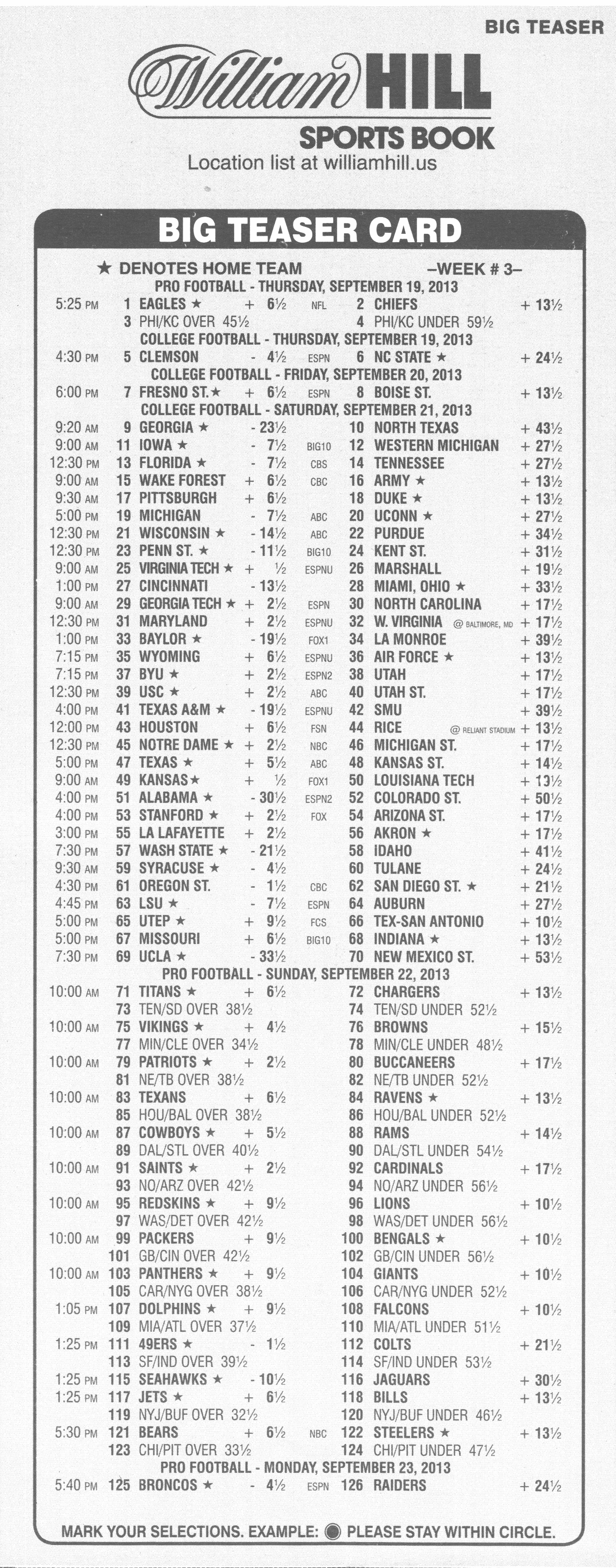Teaser Calculator
Days Between Two Dates
Find the amount of years, months, weeks, and days between dates. Click 'Settings' to define holidays.
Teaser Calculator Teaser bets are popular sports bets (particularly in football and basketball) because it allows you to adjust the point spread in your favor. Teasers are used in parlay bets (bets linking together two or more wagers) and whatever teaser amount you choose will apply to all wagers within your bet.
TEAS Test Calculator Calculator Use and Regulations in TEAS According to norms, a calculator cannot be used in TEAS. One may feel the necessity to use a calculator to solve questions in the Mathematics section, but this is not allowed. The reason for not allowing usage of calculators for answering the Mathematics section is that this section is specifically designed for testing one's mental. The calculator does not need the 4.5 from the prop or the 6 from the totals bet. These numbers are important to your overall wager, but it’s the digits in brackets that are necessary to see how much you’d win. Your payout, if every bet in this parlay hits, would be $723.68 – your original $80 comes back along with your winnings of $643.68.
Add to or Subtract from a Date

History of the Gregorian Calendar

The Gregorian calendar is the most prevalently used calendar today. Within this calendar, a standard year consists of 365 days with a leap day being introduced to the month of February during a leap year. The months of April, June, September, and November have 30 days, while the rest have 31 days except for February, which has 28 days in a standard year, and 29 in a leap year.
The Gregorian calendar is a reformed version of the Julian calendar, which was itself a modification of the ancient Roman calendar. The ancient Roman calendar was believed to be an observational lunar calendar, based on the cycles of the moon's phases. The Romans were then believed to have adopted a 10-month calendar with 304 days, leaving the remaining 50 or so days as an unorganized winter. This calendar allowed summer and winter months to become completely misplaced, leading to the adoption of more accurate calendars.
The Republican calendar later used by Rome followed Greek calendars in its assumptions of 29.5 days in a lunar cycle, and 12.5 synodic months in a solar year, which align every fourth year upon the addition of the intercalary months of January and February. From this point, many attempts were made to align the Republican calendar with the solar year including the addition of an extra month to certain years to supplant the lack of days in a particular year. In 46 BC, the calendar was further reformed by Julius Caesar, introducing an algorithm that removed the dependence of calendars from the observation of the new moon. In order to accomplish this, Caesar inserted an additional 10 days to the Republican calendar, making the total number of days in a year 365. He also added the intercalation of a leap day every fourth year, all in an attempt to further synchronize the Roman calendar with the solar year.
Despite all efforts, the Julian calendar still required further reform, since the calendar drifted with respect to the equinoxes and solstices by approximately 11 minutes per year. By 1582, this resulted in a difference of 10 days from what was expected. Pope Gregory XIII addressed this by essentially skipping 10 days in the date, making the day after October 4, 1582, October 15. An adjustment was also made to the algorithm of the Julian calendar that changed which century years would be considered leap years. Under the Gregorian calendar, century years not divisible by 400 would not be leap years. These changes reduced the error from 1 day in 128 years, to 1 day in 3,030 years with respect to the current value of the mean solar year.
The adoption of the Gregorian calendar occurred slowly over a period of centuries, and despite many proposals to further reform the calendar, the Gregorian Calendar still prevails as the most commonly used dating system worldwide.
Holidays
A holiday is a day that, either by custom or by law, is set aside such that regular activities like going to work or school is suspended, or at least reduced. The term 'holiday' can be interpreted differently, depending on region. In the U.S. paid leave is typically referred to as 'vacation,' while national, religious, or cultural days off are referred to exclusively as 'holiday.' In some regions however, such as the United Kingdom or former British colonies, the term holiday can also refer to paid leave.
Generally, holidays are meant to commemorate some event, person, or group of cultural or religious significance. Although certain holidays, such as Christmas and New Year's Day, are widely celebrated worldwide, most countries have their own set of holidays that are specific to the country, and even the same holidays may be observed differently within countries: some may receive full suspension of typical daily activities, while others may only get partial days off. Certain countries have holidays that essentially shut down almost all businesses. As an example, in Brazil, Carnaval do Brasil results in almost a full week in which only industrial production, retail establishments, or carnival-related businesses, function.
This calculator is mainly geared towards U.S. holidays, but holidays specific to a given country can be entered manually. Certain holidays can also be excluded. For a further level of specificity, federal holidays in the U.S. refer to holidays that have been recognized by the U.S. government; on these days, non-essential federal government offices are closed, and all federal employees receive paid leave. This is not necessarily true in the private-sector however, and which federal holidays a private-sector employee receives is largely dependent on the discretion of the company. In some cases, an employee who is required to work on a federal holiday may receive compensation in the form of holiday pay in addition to their regular wages.
Certain holidays such as New Year's Day are referred to as 'fixed holidays,' since they fall on the same date every year. Others such as the birthday of Martin Luther King, Jr., don't have a fixed date, because they occur on a 'floating Monday'; in this particular case, the holiday occurs on the third Monday of January. Another widely observed holiday in the U.S., Thanksgiving, occurs on a 'floating Thursday,' the fourth Thursday In November, hence the dates of these holidays vary by year. Below are two tables showing the dates of federal holidays in the U.S. for 2021 and 2022.
2021 U.S. Federal Holidays
| New Year's Day | Jan. 1, 2021 |
| Martin Luther King Jr. Day | Jan. 18, 2021 |
| President's Day | Feb. 15, 2021 |
| Memorial Day | May. 31, 2021 |
| Independence Day | Jul. 4, 2021 |
| Labor Day | Sep. 6, 2021 |
| Columbus Day | Oct. 11, 2021 |
| Veteran's Day | Nov. 11, 2021 |
| Thanksgiving | Nov. 25, 2021 |
| Christmas | Dec. 25, 2021 |

2022 U.S. Federal Holidays
| New Year's Day | Jan. 1, 2022 |
| Martin Luther King Jr. Day | Jan. 17, 2022 |
| President's Day | Feb. 21, 2022 |
| Memorial Day | May. 30, 2022 |
| Independence Day | Jul. 4, 2022 |
| Labor Day | Sep. 5, 2022 |
| Columbus Day | Oct. 10, 2022 |
| Veteran's Day | Nov. 11, 2022 |
| Thanksgiving | Nov. 24, 2022 |
| Christmas | Dec. 25, 2022 |

Teaser bets are a very popular sports bet. Especially in football and basketball, because a football teaser bet allows you to adjust the point spread in your favor. Teasers allow you to have an advantageous point spread while selecting 2 to 8 teams or more depending on the sportsbook. You may tease a side or a total of a football game and also cross sports by teasing football games with basketball games.A teaser bet is kind of like a parlay, but you are buying points in your favor as it relates to the point spread. For instance, let's say that you wanted a three team 4 point teaser for Sunday's football games.
Basketball Teaser Calculator

Teaser Calculator
- Let's say that you picked these three teams to win:
- Washington Redskins to win
- Pittsburgh Steelers to win
- Detroit Lions to win
10 Point Teaser Calculator
Now let's say that all three of these teams were 6 point underdogs. So, in the three team, 4 point teaser, you would get an extra 4 points in each game, meaning that instead of a 6 point spread, it would be a ten point spread. A teaser bet is a lot like a parlay bet, all of the games you picked must win in order for you to win. As well because you are 'buying' points, the win return is smaller.
Use our Teaser Calculator to determine the outcome of any particular teaser combination. Our Teaser Calculator allows you to select up to 12 teams in a teaser bet.